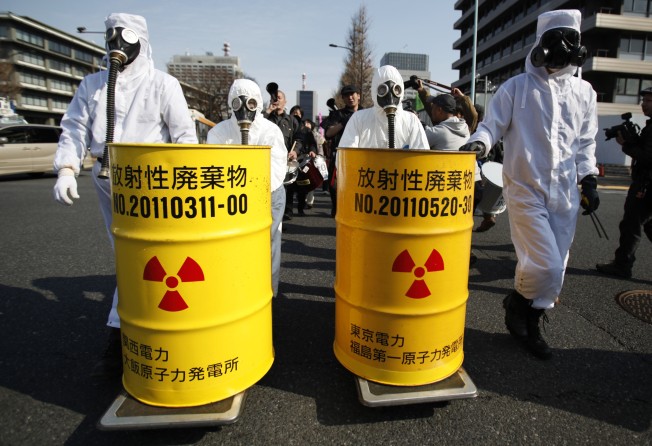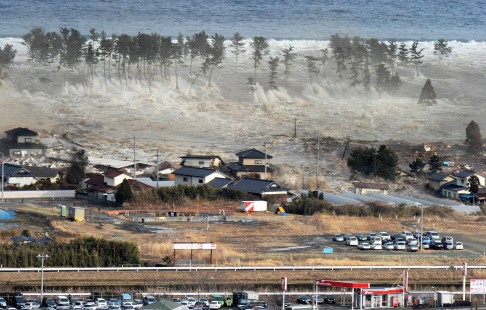Rise in childhood cancer in Fukushima sparks debate
Three years after the worst nuclear accident in a generation, the Japanese prefecture is reporting a rise in the number of children showing cancer symptoms

When doctors found several tiny nodules on his 12-year-old daughter’s thyroid gland, Toshiyuki Kamei refused to let parental fear get the better of him. The symptoms are not uncommon, and the probability that they will develop into something more serious is low.
Yet Kamei can be forgiven for occasional moments of doubt: his daughter, Ayako, is one of almost 400,000 children who were living in Fukushima on 11 March 2011 - the start of the world’s worst nuclear accident for a quarter of a century.
“As a parent, of course I worry, but my daughter is taking it in her stride,” said Kamei, who lives in Iwaki, a city about 40 kilometres south of the wrecked Fukushima Daiichi nuclear power plant. “She doesn’t tell me if it’s on her mind, and I’ve decided not to ask her about it."
Three years after the plant suffered a triple meltdown that released huge quantities of radiation into the atmosphere, medical authorities in Fukushima prefecture are reporting a significant rise in the number of thyroid cancer cases among local children and young adults.
The results have prompted a bitter debate about the potential effects the meltdown had on the health of hundreds of thousands of children. Either the higher-than-normal rates of thyroid cancer are connected to the nuclear accident, or they are the inevitable result of a testing regime unprecedented in size, and conducted using state-of-the-art medical equipment.
Last month, the number of confirmed and suspected cases of thyroid cancer among people aged 18 or below at the time of the accident rose to 75, compared with 59 at the end of last September. Of the current total, 33 cases have been confirmed as cancer.
Under the guidance of Fukushima Medical University, local health authorities have so far tested 254,000 out of 375,000 Fukushima children and adolescents, who will continue to be screened regularly throughout their lives.
Medical officials in Japan dismissed a link with the nuclear accident, but conceded that the results required further analysis.
“We hope to look for unknown types of gene mutations, other than those known to be associated with the generation of thyroid gland cancer, to study if they could serve as markers for determining if the cancers were induced by radiation,” said Shinichi Suzuki, a professor of thyroid gland surgery at the university.
At first sight, the figures give cause for alarm. Thyroid cancer normally affects one to two people per million among 10 to 14-year-olds in Japan, a rate far lower than observed in Fukushima, although tests there apply to people aged up to 18.
Inevitably, parallels have been drawn with the 1986 disaster in Chernobyl. Estimates vary, but according to the UN Committee on the Effects of Atomic Radiation, more than 6,000 cases of thyroid cancer among exposed children and adolescents living in Ukraine, Russia and Belarus had been reported by 2005. There, no attempt was made to prevent children from drinking milk or eating leafy vegetables, leaving them vulnerable to ingesting dangerous amounts of the radionuclide iodine-131, a recognised cause of thyroid cancer.
But experts familiar with both disasters caution against making similarly gloomy predictions for the children of Fukushima. Dillwyn Williams, emeritus professor of pathology at Cambridge University, pointed out that a noticeable increase in thyroid cancers was not observed until three to four years after the Chernobyl accident.
“Much less radioactivity was released from Fukushima than from Chernobyl,” he said. “Most of [the Fukushima radiation] was blown over the Pacific Ocean, and thyroid doses in the most-affected areas are low compared to Chernobyl.
“It is very unlikely there will be a large increase in thyroid cancer or any other health problems, apart from anxiety and psychological difficulties. That does not mean the surveillance should stop. There were surprises after Chernobyl and there may be again after Fukushima."
Williams and other experts have attributed the large number of cases to the use of hypersensitive ultrasound, which can detect the tiniest lesions, and the large number of children being tested.
In Fukushima, the first recorded cases of thyroid cancer - whose latent period can be between four or five years to several decades - came just a year after the meltdown. In Chernobyl, it took four years before cancer rates rose.
“The similarity in the public response to both accidents arises from a lack of awareness of the population about the real dangers and risks of radiation exposure,” said Prof Konstantin Kotenko, director general of the state research centre at the Federal Medical Biological Agency in Moscow. “After the both accidents the following was observed among the members of the public: fear and negative stereotypes due to exaggeration of the danger of ionising radiation, symptoms of depression and post-traumatic stress. Undoubtedly, these perceptions of radiation have a negative impact on the health of the population, including children."
Gerry Thomas, professor of molecular pathology at Imperial College, London University, blames growing anxiety among Fukushima residents on “pseudo-scientists who can shout louder than real scientists”.
“The biggest effect will be psychological - just as it was post-Chernobyl,” said Thomas, who insists the rising number of cases is due to comprehensive screening, not radiation. “I still stick with what I have always said: there will not be a single death due to the radiological consequences of this accident."
But scientists have struggled to reach a consensus over the possible health effects of prolonged exposure to relatively low levels of radiation. While the World Health Organisation and other UN agencies praised the Japanese authorities for ordering the swift evacuation of neighbourhoods close to Fukushima Daiichi, their decision soon after to raise the allowable annual radiation exposure limit from one to 20 millisieverts [mSv] put children in danger, said Dr Paul Dorfman of the Energy Institute at University College, London.
“This is inexplicable, since 20mSv is the allowable dose for an adult radiation worker,” Dorfman said. “Given that infants and children are still in their developmental stage, they should not have been subjected to this dose.
“Unfortunately, what this means is that we may be seeing increased ill health in the future. Not simply gross cancers and possibly heart problems, but also things that are difficult to detect through epidemiology, such as immune problems."
The anxiety felt by parents in Fukushima stems from a widespread lack of trust in the local medical authorities, which have come under government pressure not to cause alarm among residents.
The Japanese government has resisted calls from parents to conduct comparable screenings among children in a region of Japan that was not affected by the disaster. That, radiation experts say, would at least establish whether or not the thyroid cancer spike in Fukushima is out of the ordinary.
“It is such an obvious measure that could be completed in about six months, but the government has done absolutely nothing for three years,” said Koichiro Ono, a local kindergarten teacher. “The government is worried that if the results suggest that there is a link, it will ruin its plans to restart nuclear reactors."
As north-east Japan prepares to mark the third anniversary of the disaster, in which almost 20,000 people died - most of them in two prefectures north of Fukushima - the country’s leaders are trying to put a positive spin on the recovery effort.
During a recent visit to a Fukushima village where the evacuation order imposed in March 2011 has been partially lifted, prime minister Shinzo Abe congratulated residents on taking a crucial step towards resuming the lives they were forced to put on hold after their homes were irradiated.
Kamei, however, was not impressed. “How can anyone talk about life returning to normal in Fukushima until everything has been done to ensure that people have their health?” he said. “Politicians keep talking about recovery, but that doesn’t mean anything to people living around here."
